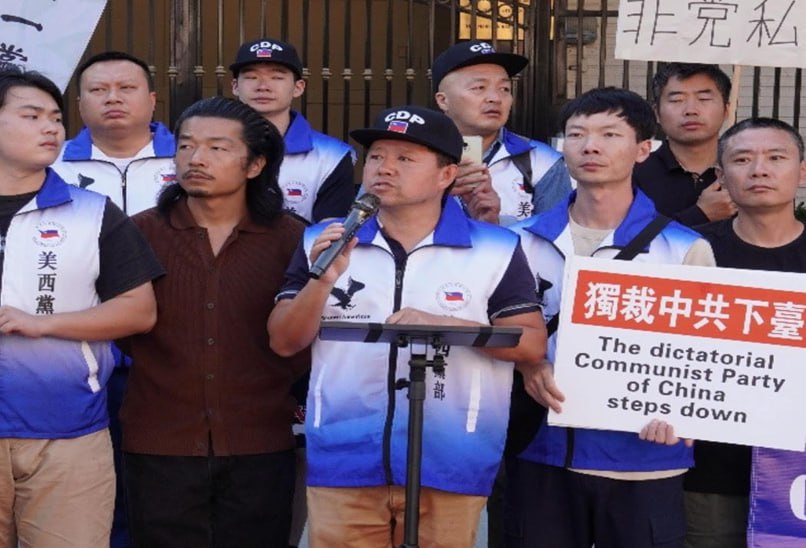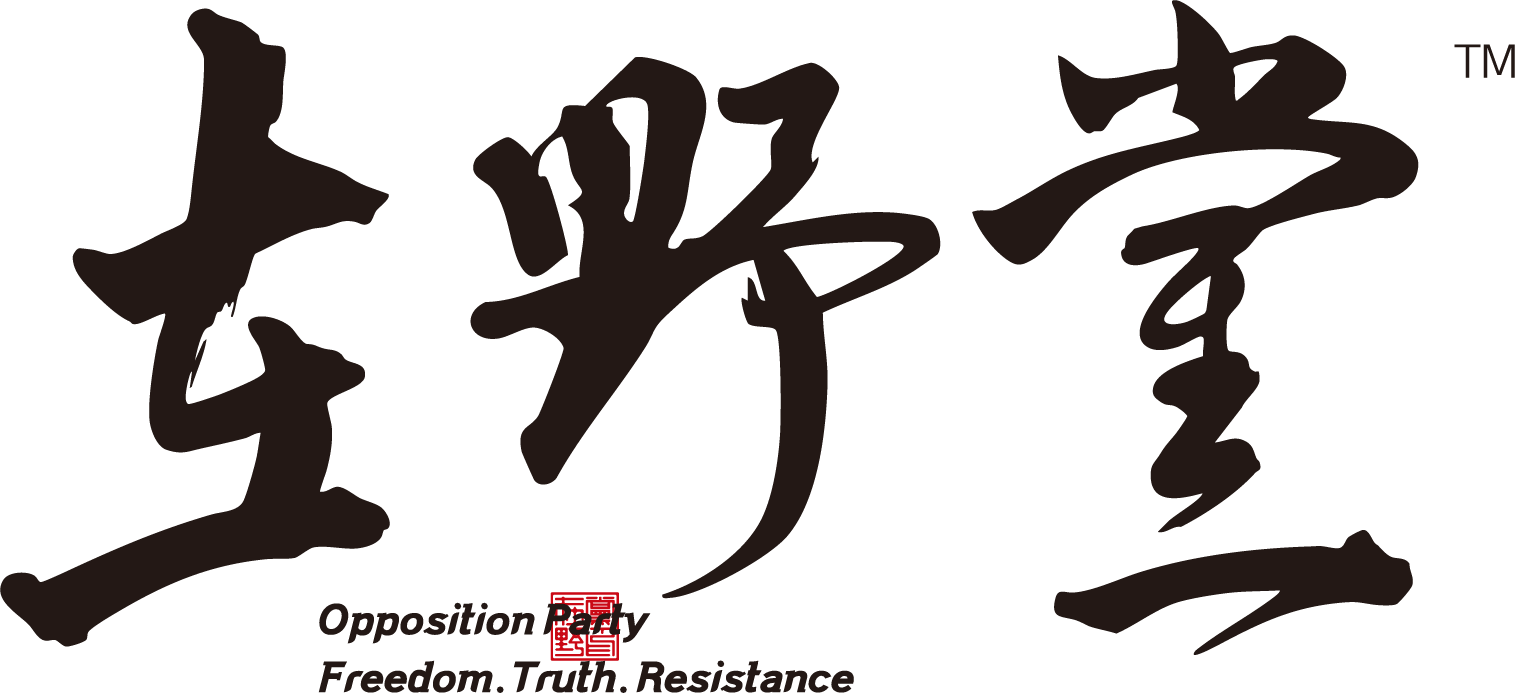作者:赵雪峰
编辑:李之洋 责任编辑:李聪玲 校对:林小龙 翻译:刘芳
我们回望中国历史,会发现一个惊人的循环:反抗暴政、打倒旧主、再出现新的皇帝。从陈胜、吴广的起义开始,我们的政治故事就像陷入了一个永恒的回圈。每一次改朝换代都带着热血与激情,但最终几乎都走向了新的极权。我们一次次推翻不义的秩序,却始终没能学会——如何限制新的权力。
一、起义有勇气,但没制度
“王侯将相宁有种乎?”陈胜、吴广这句呐喊,点燃了平民反抗的火种。那是中国人第一次大声说出——我们也想当家做主。但他们打碎了旧秩序,却没建立起新的规则。此后两千年,历史一再重演:靠愤怒起事,靠暴力夺权,靠个人权威维稳。旧皇帝倒了,新皇帝照旧。百姓换了旗号,却没换命运。
二、朱元璋的“暴力模板”
自秦以后,独裁的模式被制度化了。到了朱元璋,独裁更加变本加厉。他从乞丐变成皇帝,用铁血手段统一天下,却也建立了一个恐惧维系的国家。功臣被杀、官员噤声、百姓沉默。朱元璋确实结束了战乱,但他让整个社会学会了一个危险逻辑——“服从才能换来安全”。这种逻辑,成了后来几百年专制政治的底色。
三、太平天国:理想变成灾难
太平天国打着“反清复明”的旗号,起初看似为民请命。可一旦掌权,就迅速堕入另一种极端:以“天王”名义行独裁,动员靠信仰,统治靠军权。理想越伟大,现实越荒唐。这场运动的结局告诉我们:没有制度的理想,越纯粹就越危险。
四、现代化的歧路:列宁式党国的崛起
进入近代,中国也尝试过现代化——宪政、议会、地方自治。但军队未国家化、财政不透明、司法不独立。结果,仍是谁有枪谁说了算。中共就在这种乱局中崛起,借助列宁式党军体系与意识形态控制社会。革命成功后,他们立刻用“历史使命”取代了“人民授权”,让中国走进了一个“现代外壳包裹下的极权时代”。
五、独裁怪圈为什么打不破?
第一,掌权者怕失去权力、怕被清算,于是只能继续高压维稳;反对派又不信任制度,只能以非常手段反抗——信任崩塌,循环永续。
第二,社会太弱,国家太强。没有独立的媒体、工会、社团、学术空间,公共讨论的土壤贫瘠。
第三,法治被工具化。法律不是为了限制权力,而是为了维稳。
第四,科技进步反而让监控更高效,独裁的成本越来越低。
赵雪峰-rId5-1050X862.jpeg)
六、海外民运的盲点:反共不等于民主
很多人以为,只要“反共”就是民主派。但反共的理由千差万别:仇恨、民族主义、权力欲……都有。
问题在于,民主不是推翻谁,而是建立规则。在一些民运圈中,常见三种误区:一是先定罪、后程序;二是用个人崇拜代替制度建设;三是热闹很多,规则很少。如果反抗只是喊口号、发声明,而不能形成制度化力量,那就只是另一次轮回。
七、走出怪圈的路:制度、社会与文化
中国要想摆脱独裁,不靠圣君,而靠三样东西:
制度上:军队国家化、权力分立、司法独立;
社会上:发展自治社团,让公民能在规则中合作;
文化上:从“英雄崇拜”转向“制度信任”,从“谁好谁坏”转向“是否可监督、可更替”。
民主并不浪漫,它只是让人“可以预期、不再害怕”的生活。
未来或有不同路径——渐进改革、危机重建、或外部规则推动——但无论哪种,都必须防止倒退。
新闻自由、政党竞争、选举透明、任期制度——缺一不可。
只有让权力能上能下、能查能罚,中国才可能真正告别“换皇帝不换系统”的宿命。
从陈胜吴广到朱元璋,再到太平天国与中共,中国的历史像一场无休止的循环剧。每一代人都热血地在问:“要推翻谁?”却极少有人认真思考:“权力该如何被约束?”
真正的民主,不靠激情革命,而靠冷静的制度建设。
当反抗的怒气化为规则,当人们学会信任程序胜过领袖!
CCP Dictatorship in Historical Perspective: Why China Cannot Escape the “Cycle of Despotism”
Author: Zhao Xuefeng
Editor: L Zhiyang Executive Editor: LI Congling Proofread: LIN Xiaolong Translator: LIU Fang
Abstract: From a historical perspective, this essay examines why China remains trapped in a “cycle of despotism,” arguing that rebellions against tyranny often mutate into new autocracy due to institutional absence, a fragile civil society, and an unbalanced rule of law. Only by building checks and balances and a robust civic sphere can China break free.
Looking back at Chinese history, we see a striking loop: resist tyranny, topple the ruler, then crown a new emperor. Since the uprising of CHEN Sheng and WUGuang, our political narrative has seemed caught in a perpetual cycle. Every dynastic change begins in blood and passion yet ends in renewed absolutism. Time and again we overthrow an unjust order, yet fail to learn the essential lesson—how to limit the power that replaces it.
I. Courage in Revolt, Absence in Institutions
“Are princes and marquises born to their stations?”—this cry from Chen Sheng and Wu Guang ignited the spark of popular resistance. It marked the first time Chinese commoners loudly declared: we, too, wish to rule our own house. But while they shattered the old order, they failed to found a new set of rules. For the next two millennia, history replayed itself: uprisings fueled by rage, power seized by violence, stability maintained by personal authority. The old emperor falls, the new emperor rules the same. People change the banner, not their fate.
II. ZHU Yuanzhang’s “Violence Template”
After Qin, the model of dictatorship became institutionalized. Under Zhu Yuanzhang, it intensified further. Rising from beggar to emperor, he unified the realm with iron and blood, but also built a state sustained by fear: meritorious officials were executed, bureaucrats silenced, and commoners cowed. He ended the chaos of war, but taught society a perilous logic—“only obedience buys safety.”
That logic colored the next several centuries of autocratic politics.
III. The Taiping: Ideal Turned Catastrophe
The Taiping Heavenly Kingdom, waving the banner of “overthrow the Qing and restore the Ming,” at first seemed to speak for the people. Once in power, however, it plunged into another extreme: dictatorship in the name of a “Heavenly King,” mobilization by faith, and rule by the gun. The grander the ideal, the more farcical the reality. Its end warns us: the purer an ideal, the more dangerous it becomes without institutions.
IV. The Detour of Modernization: The Rise of the Leninist Party-State
In modern times China attempted constitutionalism, parliamentarianism, and local self-government. Yet the military was not nationalized, public finance lacked transparency, and the judiciary remained non-independent; in the end, the gun still decided. The CCP rose amid this disorder, relying on a Leninist party–army system and ideology to control society. After victory, it quickly replaced “popular mandate” with a “historical mission,” ushering China into an era of totalitarianism cloaked in modern trappings.
V. Why Is the Cycle of Despotism So Hard to Break?
First, those in power fear losing it—or being purged—so they cling to repression; opponents distrust institutions and resort to extra-legal means. Trust collapses, and the cycle feeds on itself.
Second, society is too weak while the state is too strong. Without independent media, unions, associations, or academic space, the soil for public deliberation is barren.
Third, the rule of law is instrumentalized: law serves stability maintenance, not the limitation of power.
Fourth, technological advances make surveillance ever more efficient, lowering the cost of dictatorship.

VI. A Blind Spot in the Overseas Movement: Anti-CCP ≠ Democracy
Many assume that being “anti-CCP” automatically means being pro-democracy. But people oppose the CCP for many reasons—hatred, nationalism, and raw lust for power among them.
The real issue is that democracy is not about whom you topple but what rules you establish. Common pitfalls in some circles include: convicting first and processing later; substituting personality cults for institution-building; and lots of noise with few rules. If resistance remains slogans and statements without institutional force, it is merely another turn of the wheel.
VII. The Way Out: Institutions, Society, and Culture
To escape despotism, China must rely not on sage-kings but on three essentials:
Institutionally: nationalization of the military, separation of powers, and judicial independence;
Socially: cultivate autonomous associations so citizens can cooperate within rules;
Culturally: shift from hero worship to trust in institutions, from judging “who is good or bad” to asking“can power be supervised and replaced.”
Democracy is not romantic; it merely allows a life that is predictable and no longer ruled by fear.
The road ahead may differ—gradual reform, post-crisis reconstruction, or externally driven rules—but in any case backsliding must be prevented.
Press freedom, party competition, transparent elections, and term limits—none can be dispensed with.
Only when power can rise and fall, and can be audited and punished, can China truly leave behind the fate of “changing emperors without changing the system.”
From Chen Sheng and Wu Guang to Zhu Yuanzhang, to the Taiping and the CCP, China’s history resembles an endless cycle-play. Each generation passionately asks, “Whom shall we overthrow?”—but rarely, “How should power be constrained?”
True democracy relies not on fervent revolutions but on the cool construction of institutions.
When the anger of resistance becomes rules, when people learn to trust procedures more than leaders, then China may finally set foot on the road to freedom.



张宇-rId7-1266X950.png?w=218&resize=218,150&ssl=1)
张宇-rId6-1252X934.png?w=218&resize=218,150&ssl=1)
冯仍-rId7-672X505.jpeg?w=218&resize=218,150&ssl=1)
张致君-rId6-1076X1280.jpeg?w=218&resize=218,150&ssl=1)

张致君-rId5-1024X768.jpeg?w=100&resize=100,70&ssl=1)

